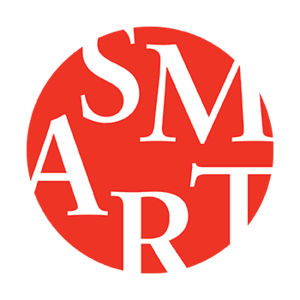5550 S. Greenwood Avenue
Chicago, IL 60637
United States
Hours: Thursday–Sunday 11am–4pm
T +1 773 702 0200
smart-museum@uchicago.edu
This fall, the University of Chicago’s Smart Museum of Art presents a series of exhibitions and artist projects that foreground the revolutionary potential of everyday art and experiences, from images and voices of women living in the Soviet Union to an art-inspired neighborhood development project and urban farm on the South Side of Chicago. The projects open the Smart Museum as a site of convergence for scholars and community members, activists and art-lovers to come together to reflect, question, and debate issues like political and social revolution, urban planning and design, immigration, and the emotional power of art.
A free public opening reception celebrating the new exhibitions takes place on Wednesday, September 27, from 6:30 to 8:30pm.
The season recently opened with projects by two artists who are responding to critical social and political issues through intimate, everyday actions that have a cumulative impact. Artist, designer, and Pussyhat Project co-founder Jayna Zweiman’s participatory project and installation Welcome Blanket (through December 17, 2017) shows the power of “craftivism.” The project is a crowdsourced artistic action that will fill a gallery with handmade blankets for immigrant families and refugees seeking resettlement, confronting issues of immigration through knitting while creating a physical space for conversation. Emmanuel Pratt’s Radical [Re]Constructions (through spring 2018) is a large, site-specific installation of a house façade and other elements constructed by youth apprentices and master craftspeople from salvaged materials that links the Museum’s lobby and courtyard to active sites of regenerative placemaking in Chicago’s Washington Park neighborhood. Pratt will also serve as the Smart’s fifth Interpreter in Residence, hosting a variety of programs throughout the next year around issues like vacancy, community, and gentrification.
Conversations with the Collection: Building/Environments (through January 28, 2018) offers a significant reconfiguration of the Smart’s collection and interior environment, opening up new perspectives on beloved artists and art objects. The unified exhibition mixes works from across eras and cultures to question the ways we occupy and perceive the built environment. It coincides with the 2017 Chicago Architecture Biennial.
Anchoring the fall is Revolution Every Day (through January 14, 2018). Presented on the centenary of the Russian Revolution, this exhibition juxtaposes Soviet posters from the 1920s and 30s with works on video and film with a focus on the experiences of women under (and after) communism. In addition to the large-scale posters, it features work by Lene Berg, Olga Chernysheva, Vitaly Komar, and Anri Sala, as well as a new commission from Cauleen Smith. The Hysterical Material (through December 17, 2017) also marks a centenary, that of Auguste Rodin’s death. Curated by artist and UChicago faculty member Geof Oppenheimer, the exhibition experiments with unusual spatial arrangements to investigate the emotional possibilities of works by Rodin and Bruce Nauman.
For additional information about all of these projects, visit smartmuseum.uchicago.edu/exhibitions.
*Clockwise: (1) Sergei Sen’kin, Let’s Make the Workshops of Factories and Plants Green!, 1931. Lithograph on paper. Ne boltai! Collection. (2) Michael Rakowitz, paraSITE (Bill S.), 1998. Vinyl, nylon, and attachment hardware. Smart Museum of Art, The University of Chicago, Acquired, as requested by the artist, through donations to the Coalition for the Homeless and Heartland Alliance by the Chauncey and Marion Deering McCormick Family Foundation, the Mary Hasten Foundation, Robert Feitler, and Brien O’Brien, 2015.32.1. (3) Welcome Blanket #00014, submitted by the Bear Rock Summer Camp. Photo: Michael Tropea. (4) Emmanuel Pratt, concept sketch for Radical [Re]Constructions, 2017. Courtesy of the artist. (5) Auguste Rodin, The Hero, 1896. Bronze. Iris & B. Gerald Cantor Center for Visual Arts at Stanford University, Gift of the Iris and B. Gerald Cantor Foundation, 1998.363.



